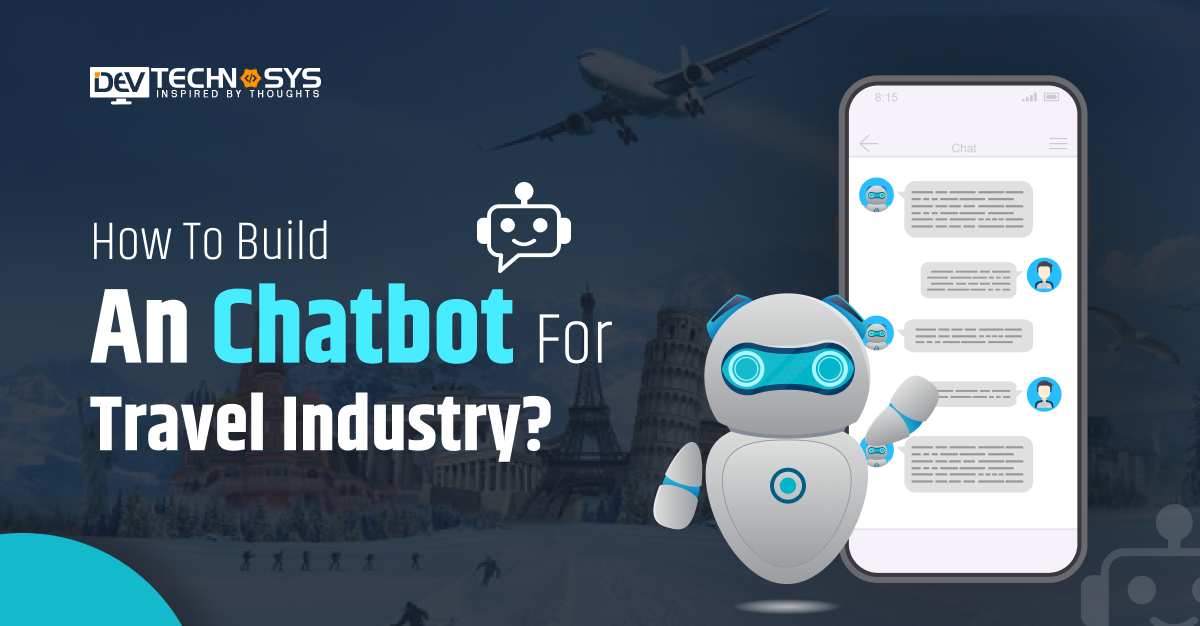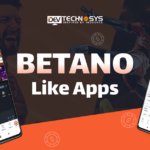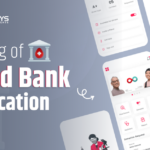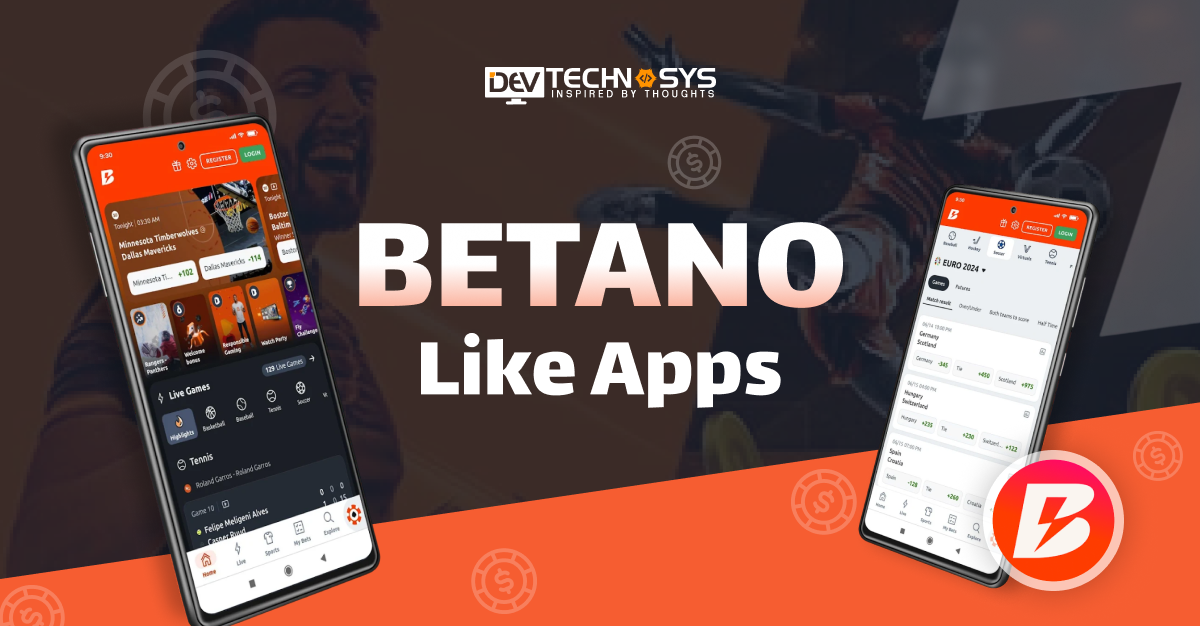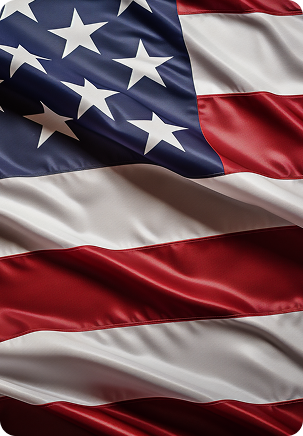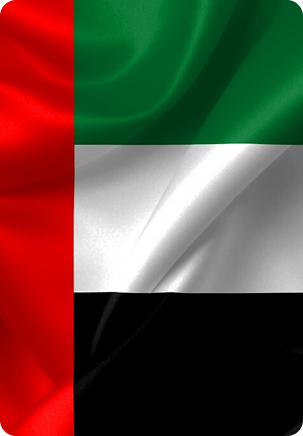“Empower users’ choices by developing a chatbot for your online travel business.”
Various business domains, including the travel and tourism sector, are modernizing with the help of the latest technologies. The use of chatbots is increasing to solve user issues without human interference. So, entrepreneurs should start investing their money to build a chatbot for travel industry. This will help them to easily target user pain points, thus increasing their engagement.
It is important to know that there are multiple applications of a chatbot in flight booking app development. So, to create a chatbot for travel industry, understanding them deeply is required for businesses.
Let’s move forward in this blog to find out different aspects related to the development of a chatbot with its applications and use cases.
What is the Need to Build Chatbots for the Travel Industry?
There is no doubt that the travel industry is providing multiple benefits to users. But, it is also necessary to resolve their issues. So, chatbots are installed in existing platforms to provide transparency and satisfaction:

1. 24/7 Customer Support
Travelers need assistance from late-night flight adjustments to hotel inquiries to emergency support. Chatbots guarantee constant availability and provide fast responses and help, free from depending on human agents.
2. Instant Booking Assistance
With so many options and choices, booking a vacation may be challenging. By targeting chatbot development solutions, businesses can help consumers access flights, hotels, or rentals in an intuitive manner.
3. Personalized Travel Recommendations
Chatbots for travel industry can recommend locations, events, or discounts through analysis of user preferences, prior actions, and real-time inputs. This customisation makes travel preparation more interesting and quicker.
4. Real-Time Updates
Travel plans could be rapidly impacted by delays, cancellations, gate changes, and weather conditions. Real-time alerts sent by chatbots keep consumers informed and enable them to quickly modify their plans.
5. Cost Efficiency
Entrepreneurs can use chatbots to automatically handle user queries instead of assembling a big customer service staff. A mobile app development company can help you lower running costs and increase business support without matching expenditure.
6. Multilingual Support
Multilingual chatbots serve a worldwide population with varied language requirements. They can easily interact with consumers in their native dialects, therefore removing language barriers and increasing market presence.
Future Scope in the Travel Industry
- Revenue is expected to reach $955.94 Billion by 2025 and rise at a rate of 3.91% CAGR per year, reaching a market volume of $1.11 Trillion by 2029.
- The hotel market, which is expected to reach a market volume of $443.07 Billion in 2025, is the largest market within travel and tourism.
- By 2029, it is anticipated that there will be 1.81 Billion consumers in the hotel market.
- By 2029, the user penetration rate is anticipated to have increased from 27.2% in 2025 to 32.8%.

- It is anticipated that the average revenue per user (ARPU) will amount to $450.44.
- By 2029, it is anticipated that 75% of the Travel & Tourism market’s total income will come from online sales.
- It’s important to note that the US is predicted to lead this industry in revenue generation, with $224 Billion in 2025.
8 Essential Steps to Build a Chatbot for Travel Industry
Let’s discuss a generally accepted process to build a chatbot for travel industry. So, businesses can make their choices by reducing the chatbot development cost and selecting the right money-making methods:

1. Find Business Objective
The first step is to clearly define the purpose of the chatbot. Target automated bookings, provides 24/7 customer support, and offers travel recommendations. Understanding your goals to decide the chatbot’s features, tone, and platform integrations.
You should also identify your target audience, like solo travelers, business travelers, and groups. This sets the foundation for the bot’s functionality and user experience.
- What are the problems in the travel industry?
- Who is our target audience?
- What KPIs will define chatbot success?
2. MVP Development
Begin by building a Minimum Viable Product (MVP), which is a basic version of the chatbot with essential features like flight search, hotel booking, or answering FAQs. The goal is to validate the concept quickly and gather real user feedback.
Focus on the must-have elements that solve your audience’s biggest problems. Keeping it lean reduces development time and costs, while still delivering value early.
- What are the must-have features for the chatbot?
- Can the MVP support real-time booking queries?
- How will we gather and implement user feedback?
3. Hiring Bot Experts
To ensure the bot is technically sound and user-friendly, hire a travel app development company with expertise in chatbot development, UX design, NLP, and API integration. Depending on your budget and scope, you can go for freelancers, agencies, or in-house developers.
Experienced teams can reduce challenges, use proven frameworks, and accelerate delivery. This step is crucial for a smooth development process and a scalable end product.
- Do we need in-house developers or freelancers?
- What expertise is required?
- How much budget should be there for hiring?
4. Creating AI Models
Once the foundation is ready, develop AI models for Natural Language Processing (NLP) to help the chatbot understand user queries. Use platforms like Dialogflow, Rasa, or custom-built models to train the chatbot with travel-specific intents like booking, rescheduling, or suggesting destinations.
Quality training data is vital to improve accuracy, and the AI should be able to handle variations in user language and intent.
- What platforms should be used to build NLP?
- What kind of data will we use to train the chatbot?
- How will we ensure the AI understands regional dialects?
5. Learning Phase
In this phase, the bot starts interacting with real or simulated users to learn from conversations. Data collected helps identify common queries, missed intents, or areas of confusion. Continuous training and updates are done based on this feedback.
This phase is vital for improving the bot’s intelligence, accuracy, and overall experience before going live. Additionally, various algorithms can be used to enhance the power of AI.
- How will we test the chatbot?
- What tools will we use to improve chatbot interactions?
- How long should we run the learning phase?
6. Test & Run
Before launching publicly, the chatbot must undergo rigorous testing to catch bugs, test integrations, and evaluate performance. Conduct functional, usability, and security testing across different devices and platforms. Simulate real-world travel scenarios to see how the bot handles them.
User feedback at this stage is valuable for final refinements and improvements. Debugging should be performed to make the code error-free.
- Have we tested the chatbot across all platforms?
- How do we ensure accuracy in bookings?
- What kind of testing feedback is required?
7. Deployment
Once the bot is tested and stable, deploy it on your chosen platforms like websites, mobile apps, Facebook Messenger, or WhatsApp. Ensure smooth backend integration with booking engines, payment gateways, and customer databases.
For a proper deployment approach, a Machine Learning development company can help you to set up analytics tools to monitor usage and performance from the start.
- Which channels are best for initial deployment?
- How will we onboard users to interact with the chatbot?
- What metrics are used post-launch to assess performance?
8. Post-Development Services
After deployment, ongoing support and maintenance are essential to keep the chatbot updated and functioning. This includes fixing bugs, adding new features, updating content, and retraining the AI based on new travel trends or user data.
Monitoring user behavior and analyzing performance metrics helps in long-term improvement and optimization.
- How to update the chatbot’s travel data?
- What’s our plan for ongoing optimization and feature updates?
- How will we continue to train the AI?
Major Applications of a Chatbot in the Travel Industry
AI-powered chatbots in travel industry and booking platforms have a lot of applications in the real world. So, in this section, we will study them with useful insights:

1. Flight & Hotel Booking
Chatbots may help consumers locate and reserve flights, hotels, auto rentals, and vacation packages. By comparing pricing, displaying availability, and providing tailored recommendations, they streamline the booking process.
2. Itinerary Planning
Based on different options, including price, destination, travel dates, and interests, an AI chatbot for travel planning can assist consumers in arranging their whole vacation. They help in building a well-organized schedule according to personal preferences.
3. Customer Support & FAQs
Users may ask a chatbot for customer service in travel, typical inquiries regarding check-in timings, cancellation policies, luggage limits, and more. To guarantee travelers quick and reliable information, businesses should invest in Deep Learning development for large user queries.
4. Accurate Travel Assistance
Real-time updates on flight statuses, boarding gates, weather, delays, and other topics come through a chatbot for travel itinerary. Through timely warnings and travel advice, they enable consumers to remain informed and easily negotiate unanticipated changes on their travels.
5. Local Recommendations
A chatbot for travel agency can serve as a virtual guide once visitors arrive at their place, providing recommendations for restaurants, activities, shopping, and local events, depending on tastes and location. This improves the trip and lets consumers find hidden treasures.
6. Travel Insurance & Documentation
A chatbot travel planner can help consumers compare and buy policies and teach them about travel insurance choices. They can also help with paperwork, allowing visitors through visa requirements, uploading travel records, and completing required forms.
7. Feedback & Reviews
Chatbots can ask consumers to score services, provide reviews, and share their experiences following a trip. This creates a database of user-generated content that can direct next clients and helps companies get insightful comments for development.
8. Language Translation Support
Conversations can be translated by multilingual chatbots, enabling travellers to interact abroad. AI chatbots in hospitality & travel help to destroy language barriers and make travel more pleasant and less demanding. Businesses should focus on on-demand app development solutions to target local hotels.
9. Currency Conversion
Real-time currency conversion rates and quick exchange value calculation to travellers are provided by chatbots. Budgeting, shopping overseas, and avoiding pricey foreign currency services all depend on this particularly helpful information.
Top Chatbots in the Travel Industry
Various chatbots are being used by multiple existing travel apps and websites. Their business models can help entrepreneurs to start an online flight and hotel booking venture. So, let’s understand a few of them in this section:

1. Botsonic
Botsonic is an AI-powered chatbot builder that helps travel agencies construct unique chatbots free from code. It links with applications and websites to help consumers with bookings, FAQs, and real-time travel advice.
- Travel businesses can build chatbots without technical skills.
- Uses GPT-powered AI based on user inputs.
2. GuideGeek
AI-based chatbot travel assistant GuideGeek is meant to offer quick travel advice, location ideas, and itinerary assistance. You can approach a chatbot development company to create a similar chatbot that leverages generative AI to provide highly tailored travel advice.
- It offers instant destination suggestions, planning help, and local tips.
- Provides travel advice easily.
3. Yellow.ai
Yellow.ai provides a strong AI-powered chatbot platform for businesses. It offers personalizing, booking management, multilingual assistance, and customer care automation. To simplify the whole travel experience, the platform combines conversational AI with automation.
- Designed for advanced workflows and large travel brands.
- It supports over 100 languages.
4. Verloop.io
Verloop.io offers conversational artificial intelligence solutions for consumer service in sectors including travel and hospitality. Over platforms including WhatsApp, desktop, and mobile, its chatbots can manage bookings, FAQs, complaints, and real-time searches.
- Integrates with websites and mobile apps to offer consistent service.
- It transfers complex queries to human agents.
5. HotelPlanner AI Agents
AI agents from HotelPlanner help consumers locate and reserve lodging for business and personal trips. By using conversational AI development services, businesses can handle group bookings, customer service, and hotel recommendations.
- Helps users to book hotels through intelligent recommendations.
- It specializes in handling bulk bookings and events.
6. PalUp’s AI Companion ‘David’
David is PalUp’s AI chatbot travel assistant that improves social vacation planning. It enables groups to plan itineraries, vote on locations, and manage travel together. Its original method helps people to conduct a structured group travel.
- It facilitates group coordination.
- Makes group travel planning interactive.
7. Flow XO
Flow XO helps travel businesses to create bots for booking support, lead capture, and customer service. It facilitates interacting with many apps, websites, and messaging systems. It provides flexible processes and automation to simplify contacts and raise customer satisfaction.
- It works with various platforms for broad accessibility.
- Helps in automation, lead generation, and customer support.
What is the Cost to Make a Travel Chatbot Assistant?
To build a chatbot for travel industry, entrepreneurs need to know various factors that influence the development cost. There is not only a single factor responsible, but many. Here, we will study those factors with their corresponding pricing models:

1. Platform Complexity
The more complex the chatbot platform, such as supporting multiple channels like website and app voice commands, or multi-language support, the higher the travel chatbot development cost. Simple chatbots cost less, while intelligent, omnichannel bots with advanced features demand more resources
Cost Factor |
Estimated Rate (USD) |
| Basic | $1,000 – $3,000 |
| Moderate | $3,000 – $8,000 |
| Advanced | $8,000 – $20,000+ |
2. Developers’ Experience
Experienced chatbot developers or specialized agencies offer a high cost to build a chatbot for travel industry, but they ensure better design, faster delivery, and fewer bugs. Junior or freelance developers may offer a low travel app development cost, but this could lead to higher maintenance rates or slower progress.
Developers’ Experience |
Cost Estimation |
| Junior/Entry-Level | $2000-$5000 |
| Mid-Level/Experienced | $5000-$8000 |
| Senior/Expert | $8000-$10000 |
| Professional | $10000-$12000 |
3. Integration Charges
Integrating the chatbot with external systems like flight booking engines, CRMs, or weather APIs can increase the overall cost to develop a chatbot for travel industry. Each integration requires development time, testing, and sometimes licensing fees from third-party providers.
Cost Factor |
Estimated Rate (USD) |
| Server | $500 – $2,000 |
| API | $2,000 – $5,000 |
| Framework | $5,000 – $12,000+ |
4. Third-Party Services
Using tools like Dialogflow, Botpress, or chatbot builders with subscription models increases the cost to create a chatbot for travel industry. Additional services like analytics tools, cloud hosting, and messaging platforms such as Twilio or WhatsApp Business may also have recurring fees.
Cost Factor |
Estimated Rate (USD) |
| CRM | $500 – $2,500 |
| ERP | $2,500 – $6,000 |
| Invoice & Payment | $6,000 – $15,000+ |
5. AI Technologies
Implementing AI for NLP, personalization, or recommendation engines increases the iPhone app development cost. AI models may require training with domain-specific data and ongoing optimization to keep the cost to make a chatbot for travel industry lower for businesses.
Cost Factor |
Estimated Rate (USD) |
| Unsupervised AI | $1,000 – $3,000 |
| Supervised AI | $3,000 – $10,000 |
| NLP | $10,000 – $30,000+ |
6. Customization
Custom features such as unique UI/UX, branded chat designs, advanced booking flows, or personalized itineraries raise the cost to develop a chatbot for travel industry. The more tailored the chatbot is to your brand and business model, the more it typically costs.
Cost Factor |
Estimated Rate (USD) |
| UI/UX | $500 – $1,500 |
| Personalization | $1,500 – $5,000 |
| Voice Algorithm | $5,000 – $12,000+ |
Benefits of Developing a Chatbot for the Travel Industry
The development of a chatbot for vacation apps and websites provides multiple advantages to businesses. They must know these benefits to stay encouraged and motivated. Let’s examine them:
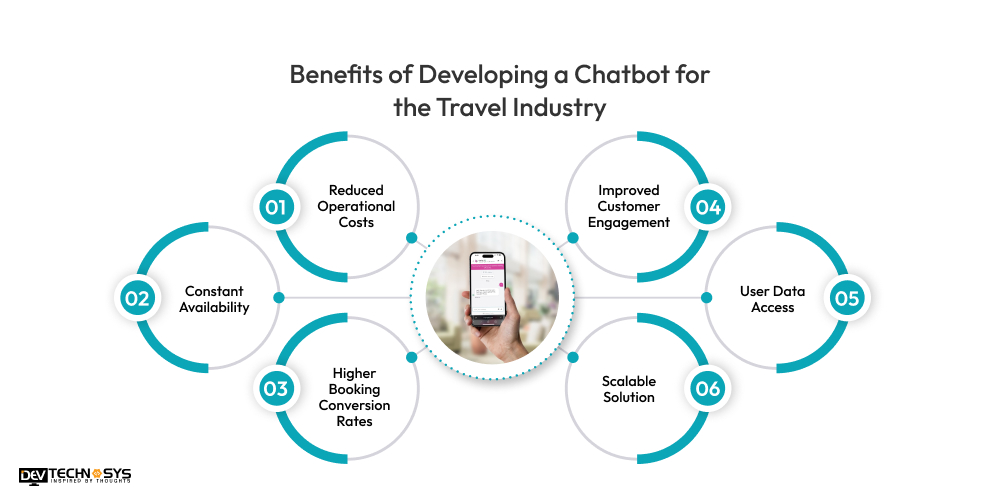
1. Reduced Operational Costs
Chatbots can automate repetitive customer service tasks like booking inquiries, FAQs, and itinerary changes. The use of chatbot development services reduces the need for a large support team, cutting labor and infrastructure costs.
2. Constant Availability
Chatbots operate continuously, offering support across different time zones without delays. Travelers can get instant assistance anytime, whether it’s midnight flight updates or last-minute hotel queries. This improves user trust and satisfaction.
3. Higher Booking Conversion Rates
It guides users through the booking process in real time, reducing friction and decision fatigue. By offering instant recommendations and support, they keep users engaged and less likely to abandon the booking process. This boosts overall conversion rates.
4. Improved Customer Engagement
With interactive, real-time conversations, a chatbot for travel website creates a more dynamic user experience. They can send reminders, suggest local activities, and check in during a trip, building ongoing interaction. This keeps the brand top-of-mind and increases customer loyalty.
5. User Data Access
A chatbot in travel industry captures valuable data during conversations like travel preferences, budget, and behavior patterns. This data can be used to personalize future interactions and refine marketing strategies. A website development company may help businesses offer more effective services.
6. Scalable Solution
An AI-based travel chatbot can scale effortlessly without loss in service quality. This makes them ideal for managing high traffic during peak seasons or marketing campaigns. Businesses can grow without proportionally increasing customer support resources.
How to Monetize Travel App Chatbots?
Monetization is a crucial part for businesses that provides a balance against investment and assistance for revenue growth. An entrepreneur must know different ways to make money through online platforms. Below are a few of them listed:
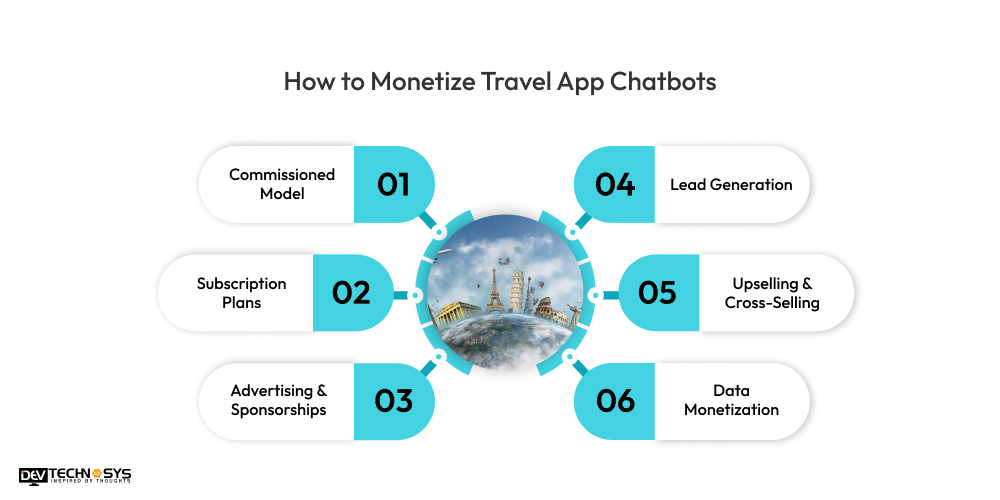
1. Commissioned Model
Chatbots can integrate with booking platforms like flights, hotels, or car rentals to earn commissions for each completed transaction. Every time a user makes a booking through the chatbot, the app earns a percentage of the sale. This model incentivizes building smooth, conversion-optimized chat flows.
2. Subscription Plans
Offer premium features like personalized travel services, detailed itinerary planning, or VIP support under a monthly or yearly subscription model. An AI development company may help you create a recurring revenue stream through subscriptions based on features or usage levels.
3. Advertising & Sponsorships
Chatbots can feature sponsored listings or promote partner services like hotels, tours, or restaurants within chat suggestions. Businesses pay for placement, clicks, or impressions. This helps monetize user attention without charging the user directly.
4. Lead Generation
Chatbots can collect and qualify travel leads, like travelers planning a trip, and sell them to travel agencies, tour operators, or insurance companies. These businesses pay for high-quality, intent-driven leads. The chatbot acts as an intelligent lead funnel.
5. Upselling & Cross-Selling
During the booking or chat flow, the chatbot can suggest upgrades like seat selection, travel insurance, or local experiences. These add-ons generate additional revenue per customer. The use of Travel app development services may help you move towards successful upselling.
6. Data Monetization
Different user behavior data, like preferred destinations, booking trends, and travel dates, can be valuable to marketers and tourism boards. Businesses can sell insights or offer analytics services. Ethical data use and transparency are essential for user trust.
Challenges in Developing a Chatbot for Travel Apps
Making a chatbot for new and existing flight booking apps is not an easy task. There are a lot of challenges in the development of an AI chatbot for travel industry. Here, we are discussing a few of them with their solutions:

1. Complex User Queries
Users often ask unnecessary questions that confuse the chatbot. Understanding intent, context, and constraints in one message can be difficult. Misinterpretation leads to incorrect suggestions or user frustration.
Solution: Use advanced NLP models trained on travel-specific data. Incorporate clarification prompts to gather missing details from users.
2. Multiple API Integrations
Chatbots need to connect with flight, hotel, weather, map, and payment APIs. Managing multiple endpoints increases the risk of errors and data mismatches. Maintaining consistency and uptime across APIs is technically complex.
Solution: Use Android app development services to handle integration logic. Regularly monitor API performance and implement fallback systems.
3. Real-Time Accuracy
Travel info like prices, availability, and delays changes frequently. If the chatbot provides outdated information, it leads to a poor user experience. Real-time syncing is critical but technically demanding.
Solution: Use APIs with live data feeds and implement automatic refresh cycles. Include timestamps in responses to show data freshness to users.
4. Preferance Matching
Users expect personalized results based on their unique preferences. Matching preferences like budget, travel style, and interests isn’t always straightforward. Generic suggestions can reduce engagement and conversion rates.
Solution: Collect user data through previous interactions or short onboarding. Apply machine learning to refine recommendations over time.
In a Nutshell!!
In this blog, we have studied the process to build a chatbot for travel industry with detailed information. Additionally, various applications and use cases are also being examined. So, it is the right time for businesses to develop an AI travel chatbot app. Consider the following points:
- Avail suitable IT consulting services at affordable rates.
- To make a chatbot for travel industry, target existing solutions.
- Prepare a plan listing all the business requirements.
- Utilize commonly used monetization practices.
These points will help you to easily deploy an AI-powered travel assistant that can be installed on every platform. This helps in generating revenue and business growth.
FAQs
Q1. Which are the Common AI Travel Assistants in USA?
Popular AI travel assistants in the USA include GuideGeek, Google Travel Assistant, Hopper, and Kayak’s AI assistant. These tools help users plan trips, book services, and get real-time travel updates.
Q2. How Long Does it Take to Build a Chatbot for Travel Industry?
The development time varies based on complexity as basic chatbots take 2–4 weeks, while advanced ones with integrations and personalization can take 2–3 months. Time also depends on factors like API availability, language support, and user flow design.
Q3. What is the Maintenance Cost of Travel Bots?
Maintenance costs can range from $50 to $500+ per month, depending on hosting, third-party APIs, and support. Advanced bots with AI and data analytics may require ongoing updates, bug fixes, and performance optimization, adding to the cost.
Q4. How to Reduce the Cost of Making Chatbots for Travel Apps?
- Use tools like Botsonic or Flow XO to reduce development time.
- Focus on core functions and features.
- Use existing templates and third-party travel APIs.
Q5. What Tools are Required for Developing Chatbots?
- Chatbot Development Platforms: Dialogflow, Microsoft Bot Framework, or Rasa.
- API Integrations: Various APIs like Amadeus, Skyscanner, or Stripe.
- Database & Hosting Tools: Firebase, AWS, or MongoDB.
Q6. Are Chatbots in Travel Apps Safe for Users?
Yes, most travel chatbots follow data protection standards and use encryption to ensure safe transactions and data handling. Still, businesses must ensure GDPR/CCPA compliance, secure API usage, and regular security audits to protect user information.
